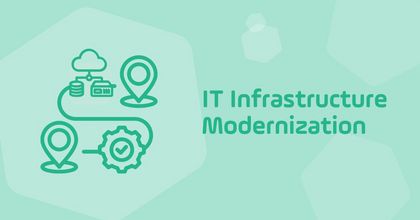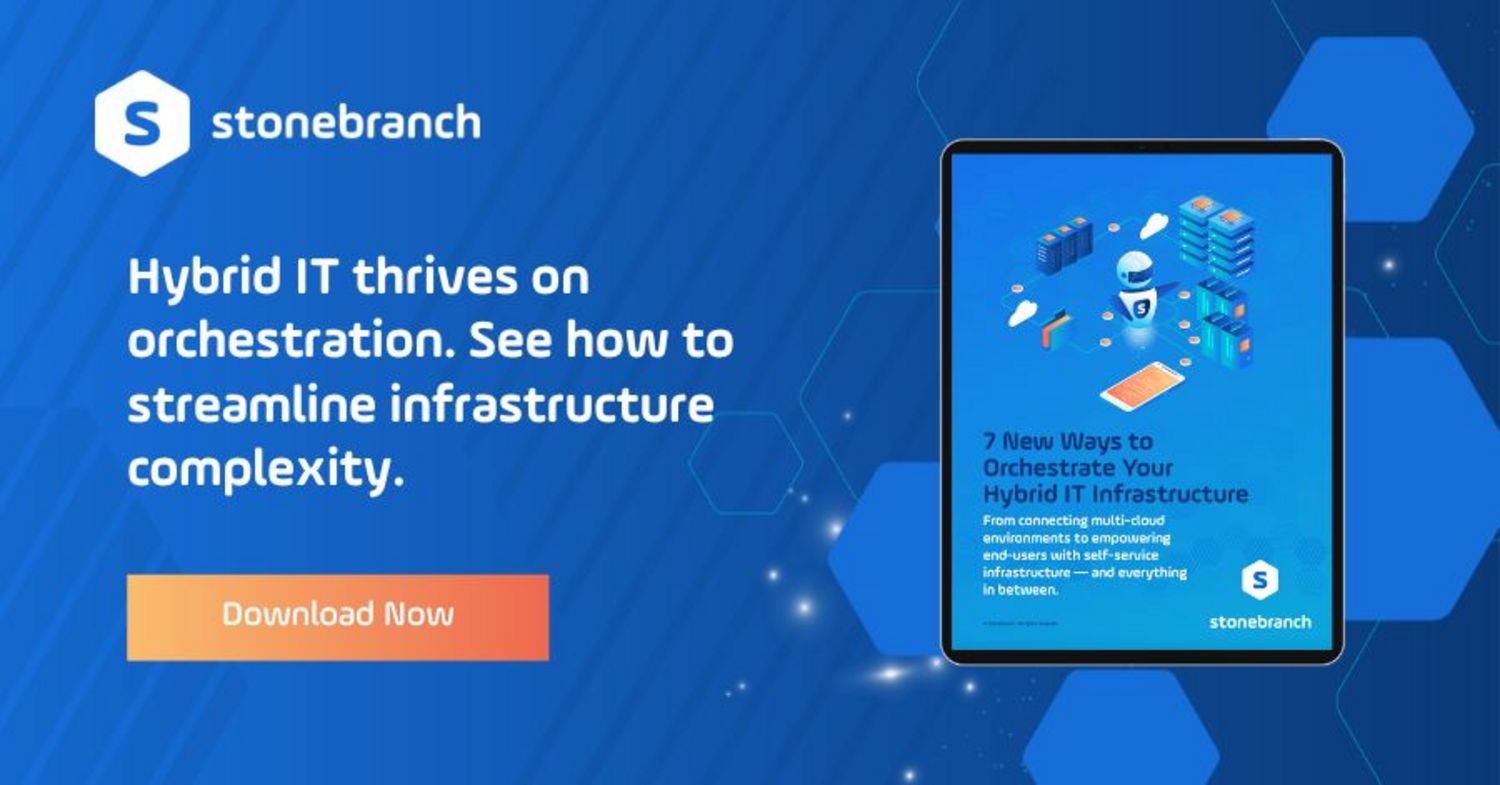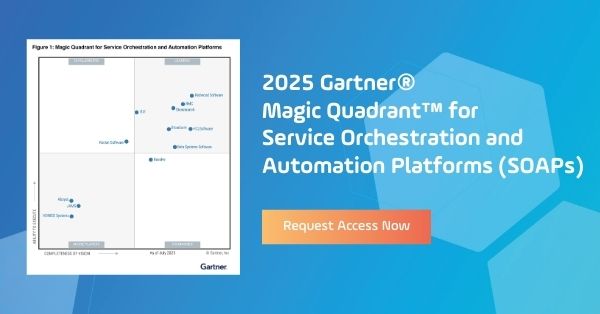IT Infrastructure Modernization Through Smarter Workload Placement and Hybrid IT Orchestration
IT infrastructure modernization is more than upgrades. See how intelligent workload placement and orchestration deliver continuous optimization across cloud, on-prem, and containerized systems.

CIOs face an urgent imperative: modernize infrastructure to stay competitive, responsive, and aligned with strategic business needs. But modernization isn’t a one-time event — it’s a continuous evolution driven by shifting technologies, organizational demands, and customer expectations.
At the center of this transformation lies a critical question: How can enterprises make optimal workload placement decisions while managing the complexity of hybrid IT environments?
According to Gartner, by 2027, 85% of workload placements made before 2022 will no longer be optimal due to evolving requirements. This forecast magnifies the need for IT infrastructure modernization strategies that are dynamic, data-driven, and resource-centric.
The Modernization Challenge: Complexity in Hybrid IT
Today’s IT environments are inherently complex. Enterprises are operating a blend of legacy on-premises systems, modern cloud-based services, and containerized microservices. Each architecture has unique requirements for operational efficiency, cost, security, and compliance.
Hybrid IT introduces even more complexity, as organizations must orchestrate processes across multiple technology silos. Without a centralized approach, workload placement decisions can quickly become outdated or misaligned, leading to rising costs, performance degradation, or security vulnerabilities.
Gartner advocates for a workload-centric approach to IT infrastructure modernization: make decisions “for the right reasons, at the right place, by the right people, at the right time.” This means recognizing there is no one-size-fits-all modern infrastructure solution. The optimal environment depends on the specific needs of each application and business service.
Hybrid IT Automation and Infrastructure Orchestration: The Enablers
In a hybrid IT world, where a process or application resides is just as important as how it’s managed. This is where hybrid IT automation and infrastructure orchestration become indispensable.
Hybrid IT automation enables organizations to centrally manage workflows, jobs, and services across on-premises systems, private and public cloud services, and containerized environments. Infrastructure orchestration builds on this capability by breaking down silos, enabling seamless integration, and supporting real-time decision-making.
Together, they provide:
- Visibility and control across the entire IT and data center landscape.
- Agility and scalability to adapt workloads and compute resources as business needs evolve.
- Consistency and governance across multiple environments.
- Event-driven automation that executes in real-time, instead of relying on static schedules.
Stonebranch: Orchestrating Workloads Across Data Center, Multi-Cloud, and Hybrid Environments
Stonebranch Universal Automation Center (UAC) is a modern, hybrid IT automation platform designed to help enterprises navigate the complexity of infrastructure modernization efforts. UAC enables IT teams to orchestrate, automate, deploy, and monitor processes across any on-prem, container, or cloud environment from a single, centralized platform.
By adopting UAC, CIOs and their teams can:
- Dynamically adjust workload placement based on cost, performance, disaster recovery, and compliance needs.
- Increase agility by migrating applications and services between environments in response to changing business demands.
- Reduce costs and optimize performance through intelligent automation and analytics.
- Integrate disparate tools and teams — including DevOps, IT Ops, and business units — with a single orchestration framework.
- Accelerate cloud migrations with seamless support for hybrid and multi-cloud strategies.
Enabling Smarter Workload Placements to Modernize Infrastructure
The number of workload placement options is rapidly growing, from SaaS and PaaS to IaaS, colocation, edge, and corporate data centers — each with different cost, performance, and compliance considerations. Gartner recommends evaluating placements against three criteria:
- Desirability (Human): Alignment with skills, culture, and organizational needs.
- Feasibility (Technical): Ability of the environment to meet workload requirements.
- Viability (Business): Long-term cost efficiency, risk, and scalability.
Together, these factors create an infrastructure mesh — a constantly shifting network of deployment models and constraints.

Stonebranch helps organizations navigate this complexity by orchestrating processes across the entire infrastructure mesh. Whether workloads run in the cloud, at the edge, or in a data center, UAC provides the flexibility to adapt placement as conditions change, real-time orchestration to keep processes seamlessly connected, and governance and visibility to manage the entire hybrid estate as one.
This level of flexibility is especially critical as the hybrid cloud ecosystem evolves. For example, vendor landscape changes like Broadcom’s acquisition of VMware have forced CIOs to reassess placement strategies. Stonebranch helps enterprises adapt with minimal disruption because its automation and orchestration aren’t tethered to a single environment.
Aligning Your Infrastructure Modernization Strategy with Business Goals
Effective infrastructure and application modernization must do more than simply upgrade technology — it must also drive agile business operations, scalability, and responsiveness. Stonebranch ensures that automation and orchestration are not isolated IT initiatives. Rather, they become strategic capabilities that align with business outcomes.
Through predictive data analytics, IT leaders can connect infrastructure performance with SLAs, KPIs, and customer expectations. Stonebranch also empowers line-of-business teams to initiate automation via Universal Portal, a self-service interface that democratizes automation beyond IT and enables enterprise-wide modernization.
Modernizing Infrastructure is a Continuous Process
The future of IT infrastructure is one of continuous adaptation. Stonebranch helps CIOs “lean forward,” as Gartner advises, by embedding automation and orchestration into product lifecycle and service delivery processes.
This strategic alignment:
- Creates space for innovation.
- Ensures infrastructure can keep pace with digital transformation demands.
- Positions enterprises to take advantage of emerging methodologies like container orchestration, infrastructure-as-code (IaC), and AI/ML data pipeline orchestration.
Get Started with Stonebranch
IT infrastructure modernization is no longer optional — it’s essential. Organizations can’t achieve business objectives without intelligent workload placement and hybrid IT automation. Stonebranch UAC stands at the intersection of these two pillars, helping enterprises modernize with confidence, agility, and control.
Download the whitepaper 7 New Ways to Orchestrate Your Hybrid Cloud Infrastructure to learn how to simplify hybrid IT complexity and future-proof your enterprise.
Start Your Automation Initiative Now
Schedule a Live Demo with a Stonebranch Solution Expert





